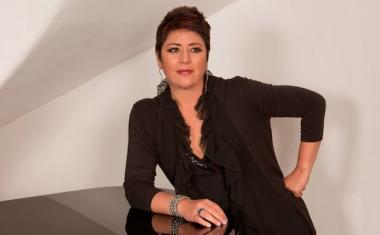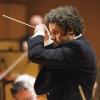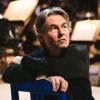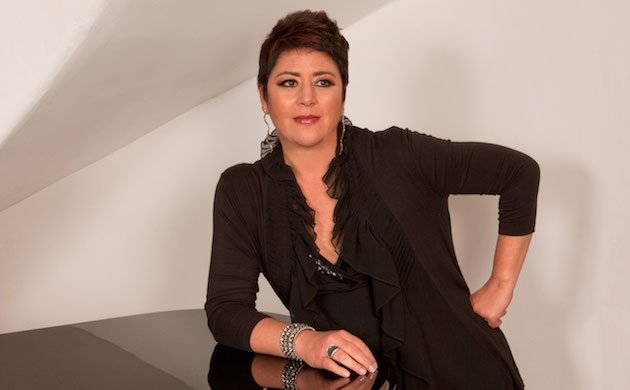
The Los Angeles Philharmonic’s centennial weekend has been one for the history books, with all three of the orchestra’s living past and present music directors getting plenty of playing time separately and in one perhaps unique outing, together. To close it out Sunday night (Oct. 27), the current Music and Artistic Director Gustavo Dudamel had the last word, unveiling a percolating, Latin American-based world premiere, and tearing through Beethoven’s Symphony No. 9.
Naturally, given current trends in marketing copy, the Ninth was the only item mentioned in the concert’s headline. A simple mathematical equation could be deduced from there: Gustavo + Beethoven’s Ninth + one performance only = a sold-out Walt Disney Concert Hall. Yet Gabriela Ortiz’s 17-½–minute work for orchestra, chorus, and percussion quartet, Yanga, deserved to be a coheadliner, for this terrific new piece further advances the promise of a dynamic, vital fusion of Latin American and European music.
Yanga is inspired by the story of Gaspar Yanga, an African prince who was shipped to Mexico as a slave in 1570, but managed to escape. He subsequently led a band of escaped slaves to raid the authorities’ caravans and eventually helped found the first free town from slavery in North America. He thus qualifies as a historic freedom fighter, which dovetails right into the all-embracing message to mankind in Beethoven’s choral finale.
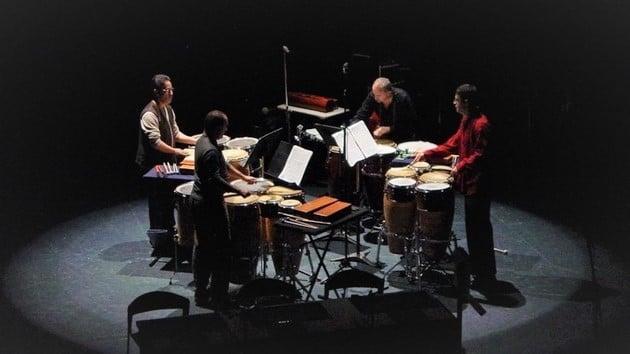
The four-man Tambuco Percussion Ensemble was armed with a music shop full of hand-held and floor-mounted drums and instruments that were imported from Africa to Latin America. At first, they entered the piece with complex irregular rhythms that deliberately didn’t coalesce into a groove. But the first groove came soon enough in the section marked Sempre ritmico — and from there they took off, at one point with all four players making a deliciously noisy pattern on cajóns.
The Los Angeles Master Chorale produced luminous choral harmony in the initial hushed sounding of the name “Yanga,” which was shouted over and over by the chorus in the course of the piece, hectoring us to not forget that name. The orchestra produced dissonant sheets of sound in the beginning, some mass pitch-bending toward the close, and was sometimes reduced to just a wisp of sound. Everyone bore down for the stretch run as Tambuco went into overdrive, culminating in the shouted word, “Libertad!” Everything seemed tailor-made for Dudamel’s core strength as an infectiously energetic, rhythmically on-the-ball advocate of Latin American concert music.
In the Beethoven Ninth, Dudamel seemed to be trying to set some kind of land-air-water speed record as he raced through the symphony in just 63 minutes, knocking seven minutes off the timing of his Ninth at his first concert as music director in Hollywood Bowl in 2009. He didn’t quite make it (rest easy, John Eliot Gardiner), but it was plenty fast.
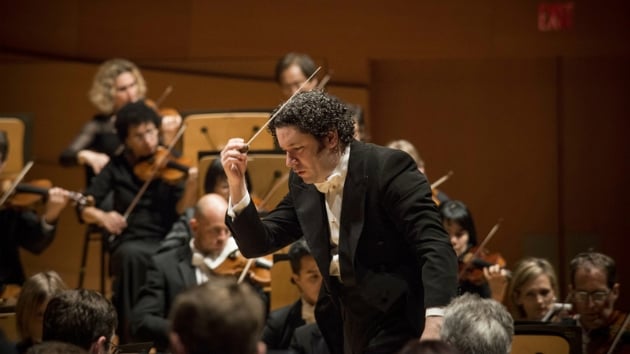
The first movement emerged in rough-hewn form, exposing the struggle that Beethoven built into the music. The Scherzo could best handle Dudamel’s high-speed pacing, a real swaggering Molto vivace that tore along with irresistible rhythm. The Adagio, though, was a brisk, superficial walk-through, and the drama of the mighty choral finale was curtailed at times with much too much rushing, though the Master Chorale coped tenaciously with every bar.
The hardy vocal quartet (soprano Golda Schultz, mezzo-soprano Tamara Mumford, tenor Mario Chang, bass-baritone James Rutherford) was stationed in back of the orchestra, and that resulted in weird imbalances like the first oboe equaling Rutherford in volume in the “Freude, schöner Götterfunken” (Joy, beautiful spark of divinity) passage. The final Prestissimo outburst was so frantic that I feared it was going to run off the rails like the notorious final seconds of Wilhelm Fürtwangler’s famous 1951 Bayreuth concert, but the Phil’s skilled players were adept enough to hang onto the whirlwind.
Indeed, Dudamel’s pattern lately has been to speed things up, as he did in all of his Mahler performances in 2019 and now Beethoven. Yet while the jolts in energy have been sugar rushes for his audiences, this hasn’t led to deeper growth in him as a custodian of the standard European repertoire. Might be just a phase.

